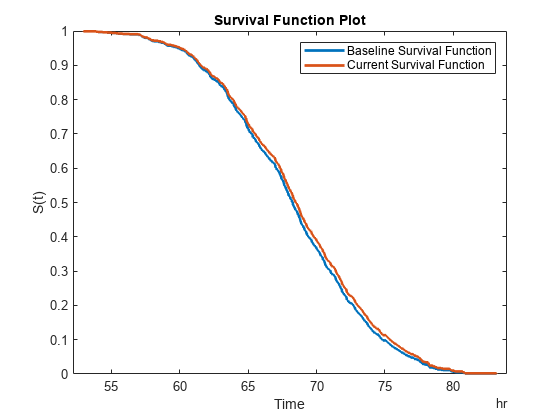fit
Estimate parameters of remaining useful life model using historical data
Syntax
Description
The fit function estimates the parameters of a remaining
useful life (RUL) prediction model using historical data regarding the health of an
ensemble of similar components, such as multiple machines manufactured to the same
specifications. Depending on the type of model, you specify the historical health data
as a collection of lifespan measurements or degradation profiles. Once you estimate the
parameters of your model, you can then predict the remaining useful life of similar
components using the predictRUL function.
Using fit, you can configure the parameters for the following
types of estimation models:
Degradation models
Survival models
Similarity models
For a basic example illustrating RUL prediction, see Update RUL Prediction as Data Arrives.
For general information on predicting remaining useful life using these models, see RUL Estimation Using RUL Estimator Models.
fit(
fits the parameters of mdl,data,lifeTimeVariable)mdl using the time variable
lifeTimeVariable and sets the
LifeTimeVariable property of mdl.
This syntax applies only when data contains:
Nontabular data
Tabular data, and
mdldoes not use data variables
fit(
fits the parameters of mdl,data,lifeTimeVariable,dataVariables)mdl using the data variables in
dataVariables and sets the
DataVariables property of
mdl.
fit(
specifies the censor variable for a survival model and sets the
mdl,data,lifeTimeVariable,dataVariables,censorVariable)CensorVariable property of mdl. The
censor variable indicates which life-time measurements in
data are not end-of-life values. This syntax applies
only when mdl is a survival model and
data contains tabular data.
fit(
specifies the encoded variables for a covariate survival model and sets the
mdl,data,lifeTimeVariable,dataVariables,censorVariable,encodedVariables)EncodedVariables property of mdl.
Encoded variables are usually nonnumeric categorical features that
fit converts to numeric vectors before fitting. This
syntax applies only when mdl is a
covariateSurvivalModel object and
data contains tabular data.
Examples
Input Arguments
Version History
Introduced in R2018a
